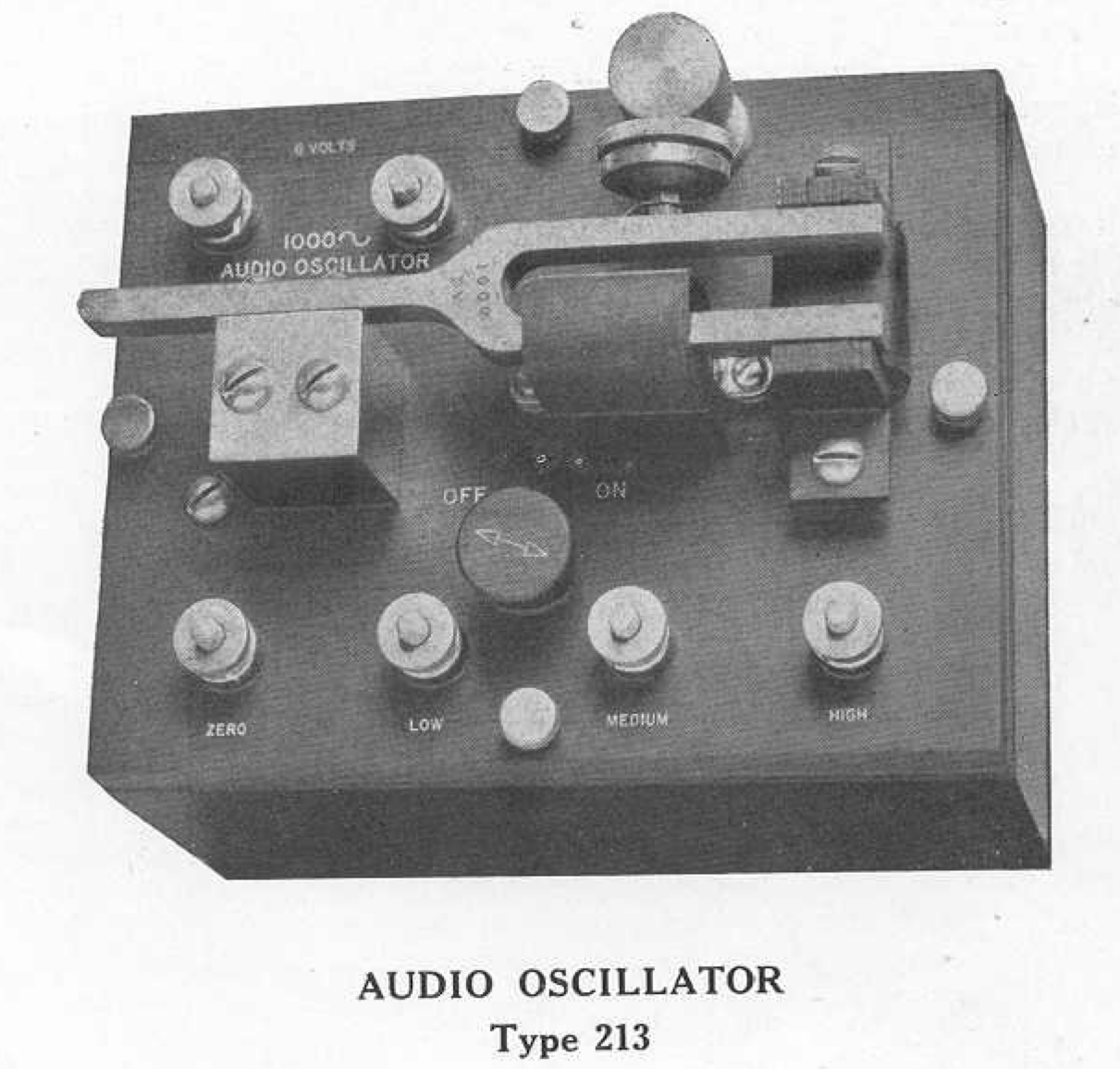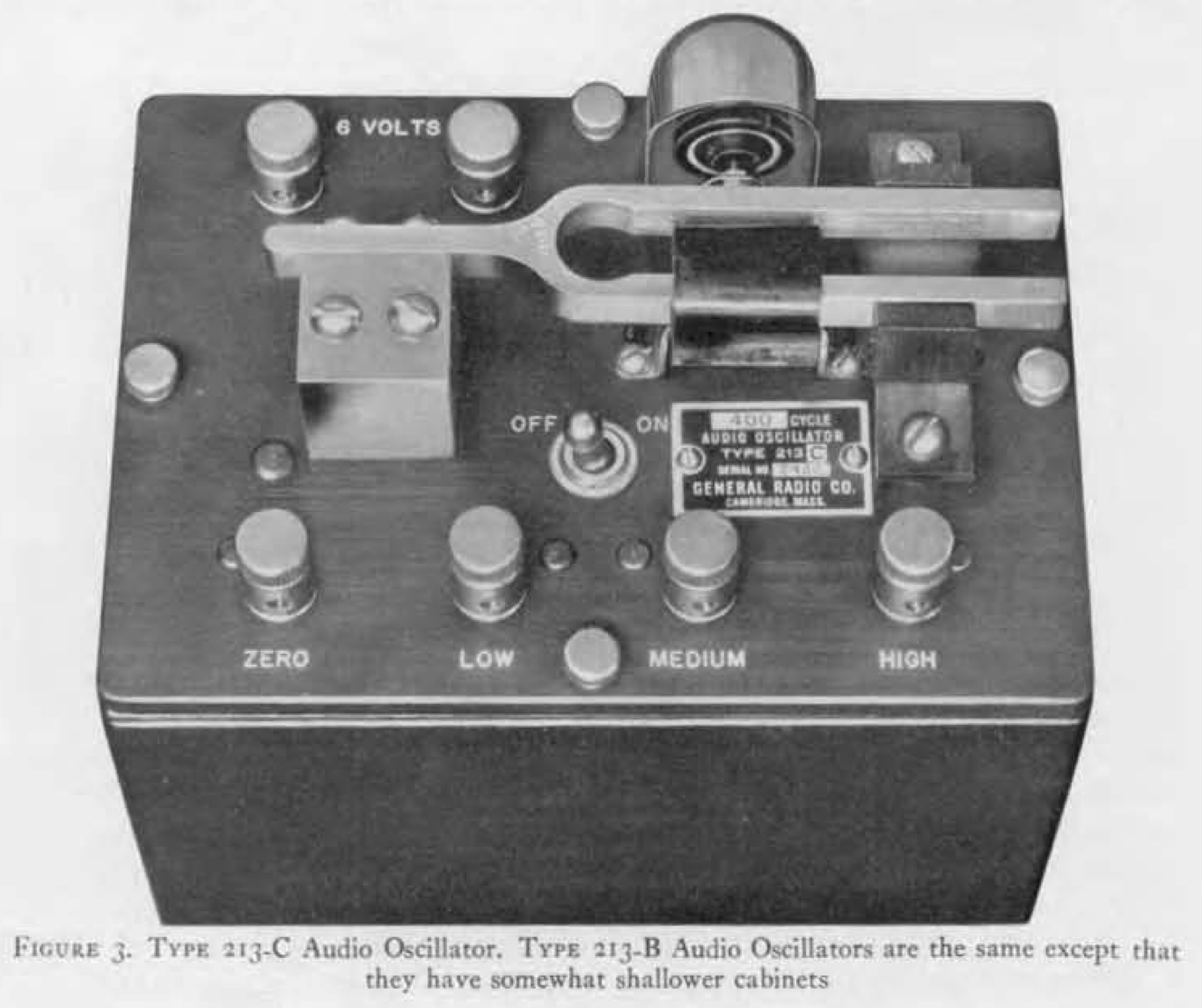General Radio Tuning Fork Oscillators
1 Introduction
General Radio produced a series of audio oscillators using a tuning fork as the resonant element. They include the Type 213, 213-B, and 213-C, the Type 813, and the Type 723.
2 The Type 213 Audio Oscillator
The General Radio Type 213 Audio Oscillator was introduced in Bulletin 701 in February of 1920. It was a tuning fork oscillator at 1,000 Hertz designed to provide a power source for AC bridge measurements. The tuning fork was used to produce a sine wave with a low harmonic content, so that harmonics do not obscure the null of the fundamental frequency on the bridge.
The active amplifying element in the Type 213 was a carbon button microphone.
2.1 The Types 213-B and 213-C
The later Type 213-B and 213-C Audio Oscillators were described in the April 1930 issue of the General Radio Experimenter.
The 213-B provides a 1,000 Hertz output and the 213-C provides a 400 Hertz output.
3 The Type 813-A Audio Oscillator
The General Radio Type 813-A Audio Oscillator was described in the May 1935 issue of the General Radio Experimenter.
4 The Type 723 Vacuum-Tube Fork
The Type 723 Vacuum-Tube Fork oscillator was described in the October 1941 issue of the General Radio Experimenter.
4.1 From Carbon-Button Microphone to Vacuum Tube
The 723 replaced the carbon-button microphone of the previous tuning fork oscillators with magnetic pickup coils and a vacuum-tube amplifier.
4.1.1 Distortion characteristics
The vacuum-tube amplifier offered much lower harmonic distortion than the earlier carbon-button models.
Another level deeper
What style of heading is used for this text?

